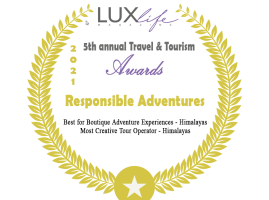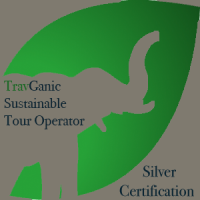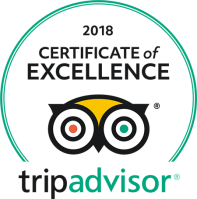Ladakh Is One Of The Few Regions For A Summer Himalayan Trek in India
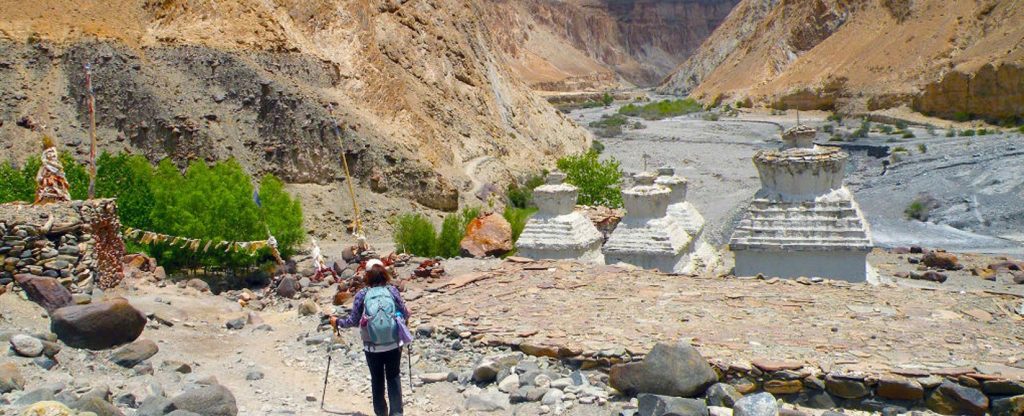
Ladakh Is One Of The Few Regions For A Summer Himalayan Trek in India Leh, the capital of Ladakh in Northern India, is only an hour’s flight away from Delhi. However, for the more adventurous and those who don’t suffer from motion sickness, you can opt for a bone-jarring 22-hour plus bus ride. The stunning scenery on this drive has to be done once in life! Ladakh means land of high mountain passes. The Buddhist monasteries, spectacular pastel-coloured deserts, jagged peaks, and colourful prayer flags flapping in the wind are Ladakh’s characteristics. Although stark, Ladakh’s landscape is magically colourful. The summer is green in the valleys, with snowmelt streams feeding the green pastures and crop fields. Brilliant colours of the prayer flags flutter on the roofs of traditional whitewashed houses. The bright sun shines intensely throughout the year in Ladakh, making it sensible to use solar Para boilers to boil water or cook. It shares its borders with China and Pakistan. India has had wars with both, which makes Ladakh a militarily strategic area. It was opened for overland travel in 1974 when the tensions lessened with China. The local population and military presence stand about in equal numbers – 250,000 each. Once a Kingdom and an essential part of the Silk Route, Ladakh is now part of Jammu and Kashmir. The Ladakhis are an exciting mixture of Tibetan, Central Asian, and Indo-Aryan. It became part of Independent India in 1948. Ladakh is one of the few areas in the Himalayas that sits in the rain shadow where the mighty mountains block the Indian sub-continent’s monsoon clouds from passing through. Ladakh is fast becoming a playground for the fans of the Himalayan Adventure holidays during the summer season. They do get “freak rainfalls” every few years. In 2010, she witnessed a catastrophic flash flood in which nearly 200 people were killed in Leh. You can walk on ancient paths through Buddhist villages with Tibetan architecture, which brings you back in time. On the way to Leh Palace, you will encounter numerous Tibetan refugees selling prayer flags, turquoise, and coral jewellery alongside the Kashmiri merchants who offer pashminas and beautiful silk carpets. The Leh Palace was a crumbling ruin until it was refurbished recently. With its sloping, buttressed walls and overhanging wooden balconies, the re-renovated Palaces stand majestically over Leh’s city. Carved lion heads guard the palace entrance, and the throne room is painted with tigers and Buddhist murals, maintaining its ancient grandeur. Smiling locals will greet you with “Jullay” while strolling in the market/bazaar area. “Jullay” is Ladakh’s traditional greeting, which is used at all times of the day. It can mean – “Hello,” “Thank you,” and “Goodbye.” Most visitors to Leh visit Hemis Monastery, which is an hour’s drive south of Leh. Hemis is one of Ladakh’s most important monasteries, and on the ride back to Leh, most tourists stop to visit the Thiksey monastery. The Thiksey monastery sits on top of a hill with its whitewashed temples with magnificent paintings. One can walk from temple to temple with the scent of burning incense and butter lamps, and if you are there early in the morning or the evening, you might even hear the monks chanting. The main attraction of the Thiksey monastery is the two-story-high Maitreya Buddha statue. Another popular acclimatization tour is the walkthrough fields lined with poplars and willow trees to the fortress and monastery at Shey, once the king’s summer palace. The popularity of Ladakh’s natural beauty has increased the number of visitors from the West as a choice for summer trekking vacations. As a result, there is a growing number of hotels and guest houses in Leh. Ladakh’s popularity has grown tremendously with domestic tourists after a movie with Ladakh scenery became a super hit. Previously the tourist season used to be in July and August. However, India’s new economic boom has become an all-year destination. Some treks we offer in Ladakh The treks from Jingchen to the Markha Valley The Rumtse to Tsomoriri trek The Zanskar Trek The Lamayuru to Alchi trek The Sham trek also is known as Likir to Temisgam trek. Check out our Trekking packages for Nepal, Bhutan, India, and Tibet.
Annapurna Poonhill Trek during the spring season
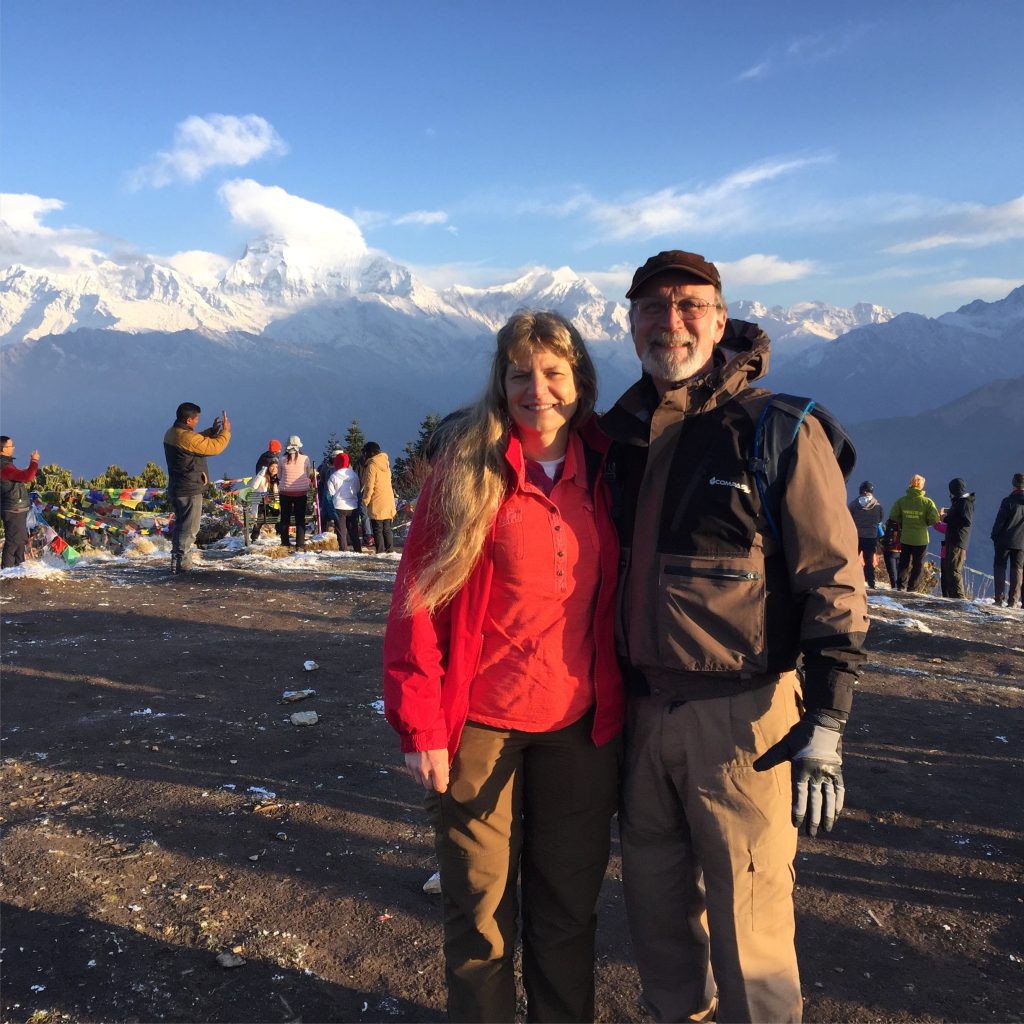
Annapurna Poonhill Trek during the spring season Ghorepani Poonhill Trek during the spring season. Kay and Paul started corresponding with us with their requests to visit museums and architectural monuments of Kathmandu, which they are very passionate about, before heading out on their tailor-made trek during their nine-day visit to Nepal. They had a hectic start to their first couple of days of the trip as we had to squeeze in as many World Heritage sites as possible on the afternoon they arrived and the following day before flying off to Pokhara in west Nepal; then driving to the starting point of the trek and hiking for an hour on day two. Day One, Kathmandu arrival and sightseeing. Their flight landed with a slight delay as it has become a norm at Tribhuvan international airport in Kathmandu due to the weather and air traffic. I met them, brought them to the hotel to check in, have a quick bite, and go sightseeing in the afternoon after withdrawing money from an ATM. Day two: Morning tour and onward to Pokhara. They went on the sightseeing tour the following day as planned, and they had an early lunch before there were dropped off at the domestic airport, where I met them and checked into the domestic terminal. We found out the flight had been delayed by two hours due to the morning foggy weather and air traffic upon asking the airline’s desk. We went through the usual security procedures, went to the departure lounge, and waited for our flight to be announced. We went to the bus, which drove us to the aircraft and waited to take off when the pilots were informed of heavy rain in Pokhara. We were told the flight was cancelled as it was getting late in the afternoon, and the torrential rain did not appear like it was going to subside anytime soon. After a quick discussion, the Thomsons agreed to my suggestion of not wasting time waiting another day to fly; instead, they hired a vehicle and started driving as soon as possible. We started on our overland journey after collecting our luggage at 5 pm. Pokhara is 200km to the west and takes 6-7 hours of safe driving on the winding mountain highway. We stopped at a small town called Damauli at 9 pm, checked into a small hotel, had a quick dinner, and retired as we had a 6.30 am start the following day. Day three: Starting the trek. We met at the reception, loaded our luggage onto the jeep, and started our road journey with a short stop for breakfast on the highway. We picked up our support team members at Pokhara after 90 minutes and had three more hours of driving before starting our trek. We went to cover our lost time and to be back on schedule. So it is possible these days with the growing road network in the Annapurna area. We dropped off at Tirkhedhunga and walked for about twenty minutes before stopping for our pre-ordered lunch. After that, we had a pretty steep ascend on steps for two hours to Ulleri. Paul found it difficult with the temperatures around the low twenties Celsius, coming from Wyoming, where it was still around zero degrees. We had been hiking towards Banthanti from Ulleri when we got caught in a hailstorm. We had just found shelter in a tea shop when it started hailing heavily. The golf ball-sized made loud banging noise when it hit the tin roofs. Pretty soon, the path and fields were white with the hailstones. It stopped after 30 minutes of the inundant hail storm. We reached Banthanti in twenty minutes; it was the stop for the night. Day four: Ghorepani 2850 m. We started our hike after breakfast amidst the oak and Rhododendron forest with soothing sounds of flowing streams. We stopped for many photos to absorb the surroundings as it was a short 3-4 hours of hiking. We had planned to go up to Poonhill 3210 meters if the weather was good so we could enjoy the sunset. It also meant that we did not have to get up in the dark to go up Poonhill for sunrise and avoid the crowd. The clouds started building up quickly this morning, and we hoped to arrive at Ghorepani before it began to rain/hail, which we did. We had a relaxing afternoon as the weather was very cloudy. We had lunch and walked around the village. We played a few card games with Ram, our porter, and Chandra, our trekking chef; this also helped bring the team and trekkers closer to each other with a few laughs. Unfortunately, it started to rain and hail from around 2 pm onwards. We hoped the downpour would clear the clouds for our sunrise the following morning. Day five: Poonhill and on to Tadapani. We woke up and left Poonhill at 4.40 am, as it takes an hour to ascend in time for the sunrise. We got to Poonhill at the right time, and it was crowded as expected, with several hundred trekkers. We each had a mug of hot chocolate to celebrate the magnificent Panorama of the Dhaulagiri, Annapurna, and Manaslu ranges. Then, we did the usual photography, admiring the views, and headed back to Ghorepani for our breakfast, as we had five more hours of hiking that day. Our hike to Tadapani, our next stop for the day, began with a climb to Deurali, a similar altitude as Poonhill at 3210 m. There is only a single teashop between Ghorepani and Deurali (Pass in Nepali. Hence, several thousand Deuralis on Nepal maps). We stopped at Deurali for some hot drinks as it had been two hours since leaving Ghorepani. To save time, we gave our lunch order to Chandra and Ram to go ahead of us and order the food to save time. We knew the weather pattern by now and wanted to avoid getting rained/hailed during
First Experience of Trekking In The Himalayas
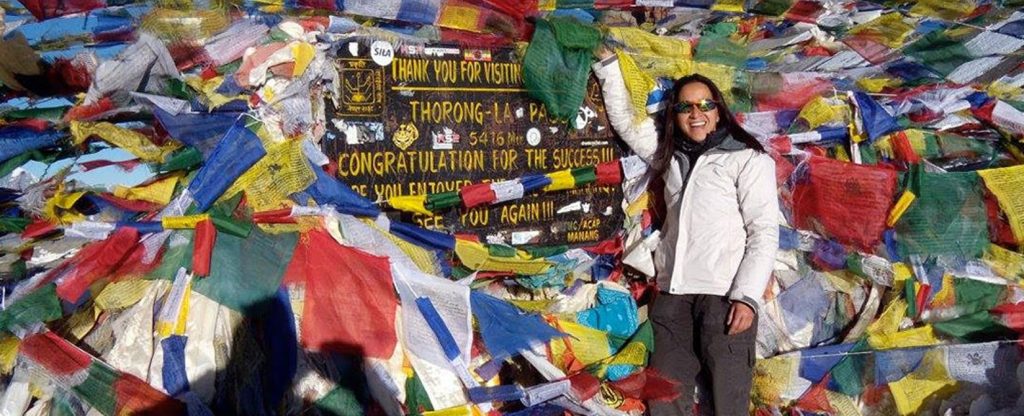
First Experience of Trekking In The Himalayas My first trekking experience was in the Nepal Himalayas. Annapurna Circuit Trek November/December 2014 A month before my fortieth birthday, I undertook my first trek, having never done anything like it or similar before. My experience with Raj’s company, Responsible Adventures, from the first e-mail I sent inquiring about trekking, could not have been better. The months leading up to Nepal’s departure saw me preparing for something entirely new for me, and Raj’s advice was invaluable. I was in regular contact with Raj asking many questions, which he patiently and comprehensively answered, which was very reassuring. I had booked to spend some extra days in Nepal outside the trekking itinerary, splitting the time between Kathmandu before the trek and Pokhara after it. Raj assisted me with my additional inquiries and travel arrangements and met with me the morning after arriving in Kathmandu. Raj took me on a walking tour of Kathmandu and Swayambhunath, the Monkey Temple. Raj also gave me some other ideas about spending my time in Kathmandu. Knowing that I enjoyed cycling, I suggested I rent a bicycle and cycle to the medieval city of Bhaktapur in the Kathmandu Valley. This was quite an eventful ride and one I certainly could not have planned! Dodging the busy weekend traffic of the city and negotiating my way through the main and side streets was quite an experience and tested my cycling abilities in ways I didn’t think were possible! This said, I had an enjoyable day exploring another part of the Kathmandu Valley rich in some of the most exquisite religious architecture, narrow cobbled streets, various squares and courtyards filled with temples, red brick houses, shrines, statues, and other artefacts. The trekking itinerary soon arrived and consisted of a car journey to Besi Sahar, where my trek would begin. After lunch, we set off for Bhulbule, and I took my first steps of many on a trip that would excite and delight me at every corner and have me fall in love with the Himalayas. Being my first day, I had no idea what to expect, but my guide ensured I was looked after, arranging my order for that evening’s meal along with plenty of hot tea and breakfast the following day. I soon fell into a routine that served me well. It helped me adjust to life on the trekking route, providing me with a sense of self-assurance and confidence in an area that, to begin with, was unfamiliar to me but soon became very regular and comfortable. One I would come to miss once the trek had concluded. A typical day started with my guide knocking on my door in the morning, and after getting ready, I would go to the dining room for breakfast, which was always served promptly. After breakfast, I would pack my final bits, and then we would set off for a day of trekking and chatting! My guide ensured I was kept safe and well on the trek, pointing out any hazards such as thorny bushes and nettles in the lower regions and advising on how to negotiate any terrain that might be tricky. For me! He also carried my trek pack, arranged the evening’s accommodation at every destination at the end of each day, and ensured I was well fed and hydrated. In the lower regions, it was clear to see the industrial progression, including hydroelectric plants, fish farms, and of course, the road slowly creeping further along the trekking route. This took up quite a lot of the conversation, to begin with, with me asking about how this impacted the local communities and their lives and the pros and cons of this modern advancement. As we started to leave this behind, my attention turned more towards the mountains and even more stunning scenery and local life along the route. As we ascended, the landscape began to change, and once we got above 3,000 meters, my guide added an acclimatisation walk to the day’s trek. This usually consisted of an additional hike for about an hour and a half heading upwards before coming back down to the tea house, seeing me trekking high but sleeping low. I am sure that this helped me acclimate to the altitude and meant that I did not need to rest day in Manang. I certainly didn’t feel I needed to have a rest day. Although I noticed that sleep was becoming a little more elusive, the further up we got, I always felt healthy and well, and the altitude did not appear to have any adverse effects on me. Despite this, my guide did suggest I add garlic soup to my already increasing meal in the evening, saying that it would help with acclimatisation. As my appetite didn’t appear to be suffering, I happily added it to my dinner order! Feeling strong and well during the trek meant that we seemed to be making good time on each day’s walk, so when we arrived at Thorung Phedi at lunchtime, we decided to head up to High Camp in the afternoon rather than spend the night lower down. This also means that the long day going over the high pass at Thorung La would be slightly shorter. It was always lovely that I could discuss these sorts of things with my guide, and it made me feel like I could give some strong opinions as to how the day would unfold, and I wasn’t just being led the whole way. It was also nice to know that my idea was considered and valued by my guide. The morning going over the high pass, Thorung La, started early (I had not slept much that night, but it did mean I was able to witness some of the most incredible night skies I would ever see), and we were the first to leave High Camp under a moonlit sky. I was told that night’s temperature had been in the region
The Differences between Lodge or Teahouse trekking and camping treks
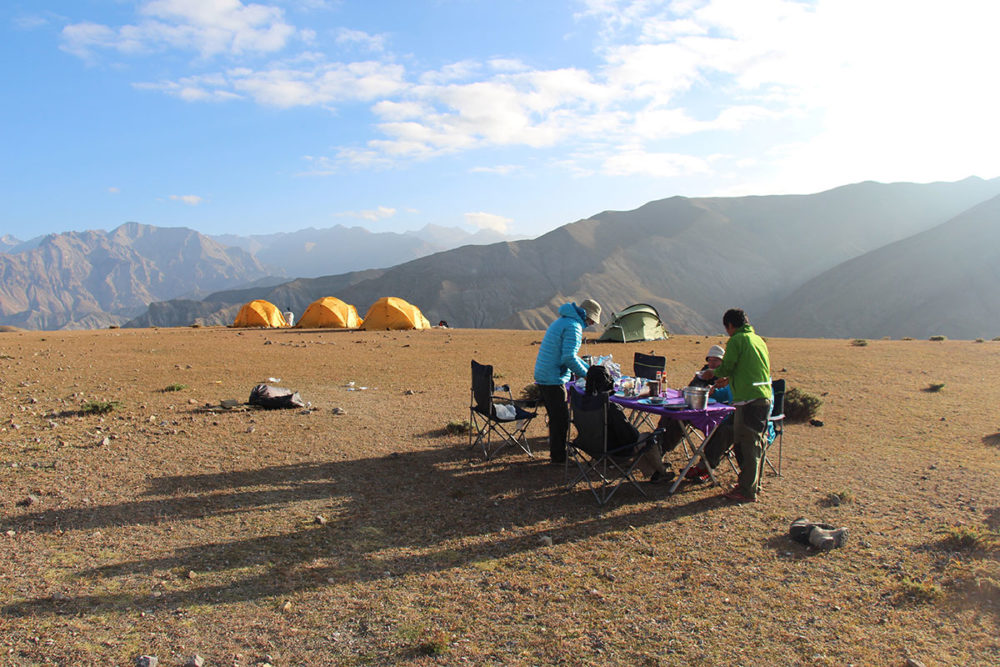
The Differences between Lodge/Teahouse trekking and camping treks LODGE/ TEAHOUSE TREKKING All over Nepal, teahouse trekking has evolved into a more lodge-like experience. However, providing some more creature comforts – relatively consistent meals and beds- remains a pretty affordable way to trek. Teahouses are found throughout the country’s trails, so no matter where you are, you can have a hot meal and a revitalizing sleep. Annapurna, Langtang, Upper Mustang, and Everest regions are full of teahouses, following the country’s well-beaten trekking trails. By the day, however, there are plenty of homestays in the developing paths converting into guesthouses. Teahouse trekking is the new standard, with standardized menus and varying conditions of rooms. A general rule of thumb is that the more developed the trail, the more amenities the lodges have. But when it comes to food, the quality varies, and the interpretation of what constitutes each dish does too. You will be able to find pizza, fried rice, macaroni and cheese, and some other tastes of home in the dining rooms. But keep your expectations low because a pizza in The Himalayas is Nepali, not from Napoli. However, that’s not to detract from the food; don’t go in with Michelin’s standards. Another great benefit to teahouses is being close to locals to converse and learn about their cultures. It’s equally suitable for those not wanting to be burdened with carrying their tents and food for the duration of their trip. If you’re staying in guest houses, you’ll generally have a porter carrying your gear (if you’ve booked with a trekking company); so you will only need to have a 30-40 litre bag for your personal effects, such as sunglasses, drinking water, snacks, hat, and jacket in case of rain. You’ll also be provided blankets, and, in some lodges, there will be wood-burning heaters, and the dining rooms get nice and toasty with all the trekkers reading, playing cards, and having fun after a day’s trekking. A FEW WORDS OF ADVICE: – Don’t leave belongings in the dining rooms unattended. You may lose them, so be sure to ask a buddy or guide to look after them while you are away. – Always lock your room. Generally, guesthouses are safe and secure, but it pays to play it safe. ORGANIZED CAMPING TREKS A camping trek is the original and classic style of trekking. Before Nepal’s tourism industry, entrepreneurs began opening their teahouses, tents, porters, cooks, animals, and guides to run the country’s expeditions. While it might seem daunting to carry weeks’ worth of food, tents, and other paraphernalia, don’t fear. Robust porters carry the trekking gear, hauling food, fuel, utensils, and food. Camping in the Himalayas is luxurious compared to what many Westerners might be used to. But, much like teahouse treks, all trekkers need to carry their daily necessities. The trekking team does the rest: setting and breaking camp, preparing meals, and purchasing fresh food along the trail. Some high-end companies provide makeshift ablution blocks, shower tents, and even heaters for dining tents. It all comes down to how much you are willing to pay for your camping trek, which is generally more expensive. Understandably, the cost difference is because of the number of people employed, the gear they have to carry, and the duration they are away. But, despite the steeper cost, the experience is unlike any teahouse trekkers have because they are off the beaten track, and people can experience much more untouched Nepal. And, if you have the right company, you will get to experience an authenticity you won’t find on a beaten trail. RESPONSIBLE TOURISM: It would help if you were assertive with whatever trekking agency you are about to book to make sure they are environmentally considerate. The best carry out all rubbish produced by their team while catering for you following the ‘Leave No Trace values. The saying goes: “Take nothing but photos and leave nothing but footprints.” WORD OF CAUTION: – If you are fortunate enough to find a top trekking company that can provide a heater for the dining tent, keep part of the zippers/flaps open to allow air circulation to avoid carbon monoxide build-up. Similarly, unzip a part of the inner tent to enable airflow to minimize condensation inside your tent. Check out our Trekking packages for Nepal, Bhutan, India, and Tibet.
Common mistakes about the Himalayas
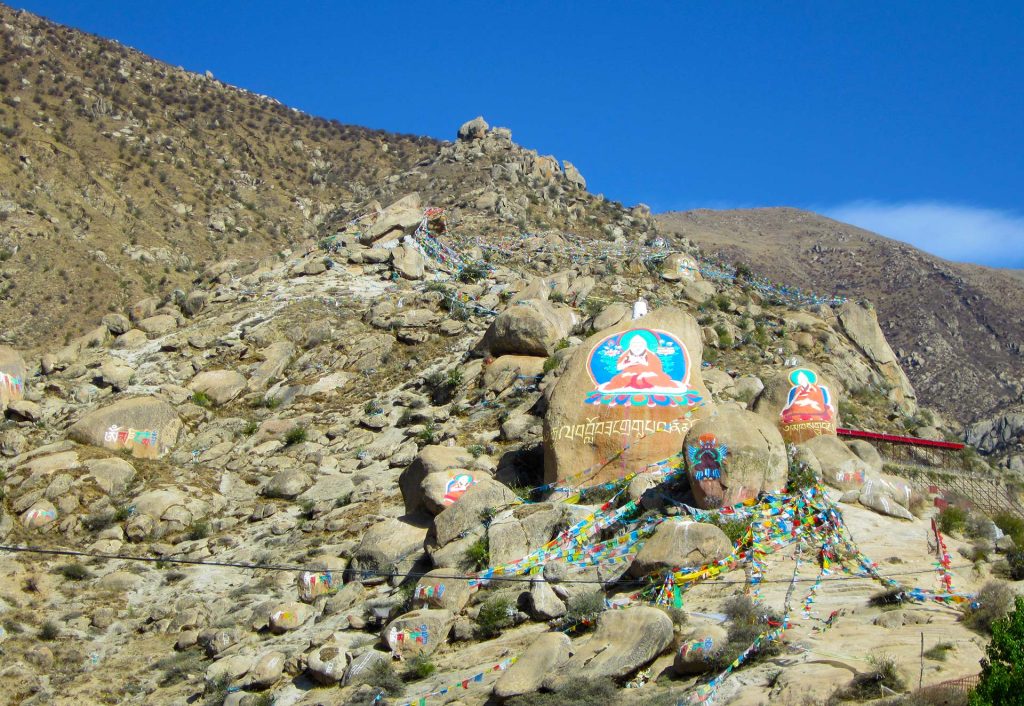
Common Mistakes About The Himalayas The entire Himalayan region is something like a mythical land to many people worldwide. Known for its unique culture, towering mountains, and serene reputation, it can begin to seem almost utopian to some. Or, at the very least, it looks like a place that differs from the rest of the world. Some of these perceptions may be entirely fair. However, there’s also a good chance that if you’re preparing for a trip to the Himalayas, you’ve bought into a few myths about the area. The mild air of mystery surrounding the region in many international eyes ultimately leads to a degree of myth-making and fictionalization, which is to say there are some common misconceptions about the Himalayas. These are just some you may want to be aware of. Secret Kingdoms Again, the Himalayan region projects an air of mystery to much of the world. Within this perception, people undoubtedly imagine whole secret countries or kingdoms within the mountains. That might sound silly until you consider something like the widely popular video game Far Cry 4, set in a fictional land called Kyrat in the Himalayas. The game’s makers were careful to establish some accuracy, saying they wanted to find the kind of place on the edge of the map and a history of political instability. The result is a reasonably believable fiction that millions of gamers dove into. But rest assured: there are no secret kingdoms in the mountain ranges, though there has been political turmoil and conflict at various points in modern history. Pure Buddhism Buddhism fits with how many people in the international community see the Himalayas. And particularly in Nepal, there is a history of Buddhism, which makes this perception completely understandable. That said, the area as a whole is probably less Buddhist than a lot of people imagine. Those who practice religion seriously are Hindu as often as they are Buddhist, if not more, and there are Muslims and Christians in the region. Sherpa Assistants Perhaps one of the more offensive misconceptions about Himalayan culture is that Sherpas are nothing more than assistants or guides for tourists. Of course, experienced Sherpas can and do help visitors hike through difficult areas safely. But they’re not merely tour guides, nor do they exist solely for the convenience of travellers. So we’ll say it in the most precise possible terms: Sherpas are an ethnic group, and while they’re concentrated primarily in the Himalayas, some live out and about in the world. Casino Activity This may not be quite as widespread a misconception. However, just as the video game mentioned above can affect a widely available slot machine arcade based in the Himalayas. These days, mobile games can be released worldwide quickly and effectively, which means all kinds of exciting themes are enjoyed by people all around the planet. Thus, a game called the Himalayas: Roof Of The World, which primarily traffics in traditional Himalayan imagery, can make an impression. Some might well have come to believe it indicates that there is casino activity in the region when, in fact, there is very little, if any, at all. Shangri-La The myth of Shangri-La is associated with a few different places in the world. However, many think of it as a valley, mountain range, or even a small municipality of some kind within the Himalayas. This idea was likely furthered by the game above Far Cry 4, which has Shangri-La chapters, so to speak, within its Himalayan city. But, sadly, it’s all a myth. Shangri-La does not exist, at least in a clear-cut sense. Instead, it’s a fictional land from an adventure novel, believed to be based on a conflagration of southern Asian valleys and morphed into a utopian vision. Check out our Trekking packages for Nepal, Bhutan, India, and Tibet.
The best treks in Ladakh
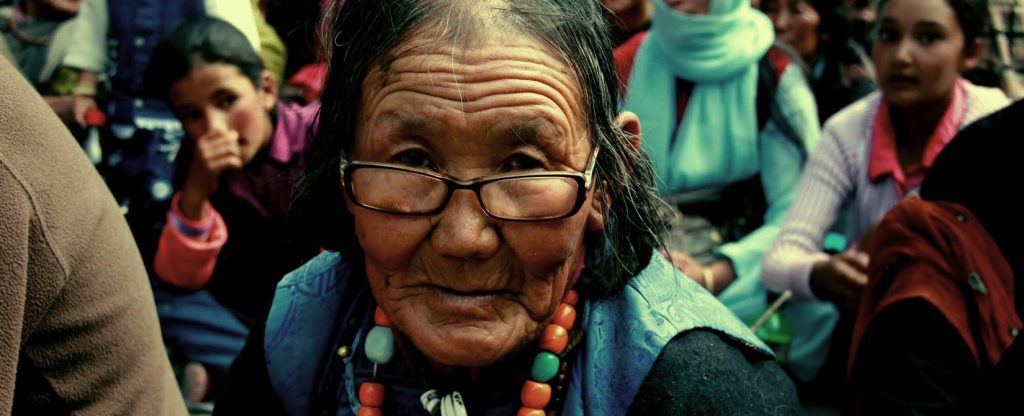
The Best treks in Ladakh The best treks to participate in Ladakh include an option for people of all fitness levels and experiences. There are many trekking companies, both local, regional, and international, that offer trekking vacations. These companies will organize the guide, and support crew, provide necessary trekking equipment, and pack animals and meals. Recently it has been possible to go trekking and stay in simple homestays with the villagers. You will find that there is a considerable variation in cost between the trekking agencies. However, this gives you an idea of what you can expect in the quality of services, equipment, and food and will make a massive difference in your experience. You will find the most popular Markha Valley Trek online and the ever-growing companies in Leh’s main bazaar. However, don’t be fooled into thinking everyone can do this trek; it isn’t an easy trek. It involves crossing at least one if not two high passes around 5000 meters in altitude. You will sleep at a high altitude for several nights on this trek. This famous trek brings you an outstanding combination of Ladakhi lifestyles and culture with stark landscapes, unusual rock formations, and canyons. The Markha Valley trek is between the Stok and Zanskar ranges, south of Leh. The starting point can vary with the number of days you have for this trek, as road construction has opened up the options. Zingchen is the entrance to Hemis National Park, where a fee is charged. It is one of the largest National parks in India and the only one North of the Himalayas. You can go on a camping trek or stay at village homestays. A camping trek is a private “luxurious” version (depending on the company you have booked), and the homestays can be overbooked as the phones might be out of order. If a homestay is fully booked, you might be able to spend the night in local teahouses or parachute cafes; make sure you have a perfect sleeping bag. The parachutes are used to airdrop food supplies to the troops by the army. Duration: 6-12 days. Level: Moderate to strenuous Hours of Trekking Per Day: 4-6 hours most days, with some days 8-10 hours towards the end. Highlights: Panoramic vistas from high-altitude passes. Ruined Forts at Markha and Hankar. A visit to Hemis monastery at the end of the trek. When to Go: Mid-June to late September. Sham Trek (Likir-Temisgam): For Beginners The Ladakhis call this the “baby trek,” but you have to remember that it goes over 4000 meters over more minor passes, and the daytime temperatures can be hot during the summer. This is the most popular trek in Ladakh and is suitable for beginners. However, it does have its challenges with some steep climbs and descents. You will be going through villages in the arid Sham region in Ladakh. You will get to Likir at a ninety-minute drive from Leh. This trek is ideal who want to try a shorter duration trek, beginners, and families. It is a lower altitude trek than the other areas where you mostly sleep below 4000 meters, and the passes are relatively shorter in the distance. Lately, homestay accommodation has been mushrooming. It is possible to do this trek without packing animals; you can have a support vehicle to carry your duffel bags and meet you at the homestay at the end of the day. Duration: 4 – 5 days. Level: Moderate. Hours of Trekking Per Day: 4-5 hours. Highlights: Rugged and frequently changing landscape, plus monasteries at Likir and Ridzong. When to Go: Anytime from late May to late September (it will be hot during July and August). Lamayuru-Alchi: Ancient Monasteries Trail Four of the oldest surviving monasteries in Ladakh lie on this route, which is more robust than the Markha Valley Trek. It is a superb opportunity to combine the trek with the historical heritage of this region. It begins from Lamayuru, which is about three hour’s drive from Leh on the Srinagar-Leh highway. This famous village is the starting point for many treks in Ladakh. There are several guest houses in the town. Lamayuru monastery is beautifully perched above the camping ground. This trek is challenging in parts, but the Zanskar range’s clear sparkling streams make it worthwhile. Duration: 5-6 days. Level: Moderate to strenuous. Hours of Trekking Per Day: 5-6 hours each Highlights: Lamayuru Monastery, the oldest monastery in Ladakh, dates back to the 11the century and is where the mystic Naropa meditated in a cave. Alchi Monastery is celebrated for its impressive early Kashmiri Buddhist murals. When to Go: Mid-June to late September. Rumtse-Tsomoriri trek This trek takes you to the remote area of Changthang – a continuation of the Tibetan plateau. You will be trekking in a high-altitude area home to the Nomads. It also becomes the summer breeding ground for many rare and endangered birds. Duration: 9 days. Level: Strenuous. Hours of Trekking Per Day: 6-7 hours. Highlights: Rich in Flora and fauna in Hemis National Park. We visited Stok Palace at the end of the trek. When to Go: Mid-June to late September. Padum-Darcha: Remote Wonders Despite being a long trek from Zanskar in Ladakh to Lahaul in Himachal Pradesh, it is an ideal trans Himalayan trek for the first-time trekker, with only one pass above 5000 meters. It starts at Padum; two days drive from Leh, there are plenty of campsites, and homestays are growing annually. Then, you will trek towards the Lugnak Valley, southeast of Zanskar, an old trading route between Zanskar and Lahaul. If you like a longer and more challenging trek, you can combine the Lamayuru with the Padum trek. It will become a three-week-long adventure. It is best to do this trek soon as a road is being built between Padum and Darcha. Duration: 9 days. Level: Easy to moderate. Hours of Trekking Per Day: 5-8 hours Highlights: Phuktal monastery is a mind-blowing monastery. This isolated location of Phuktal is only reachable by trekking. When to Go: June to September. Zanskar Chadar Trek: Walking on Ice When snowfall starts covering
Trekking in Nepal during June
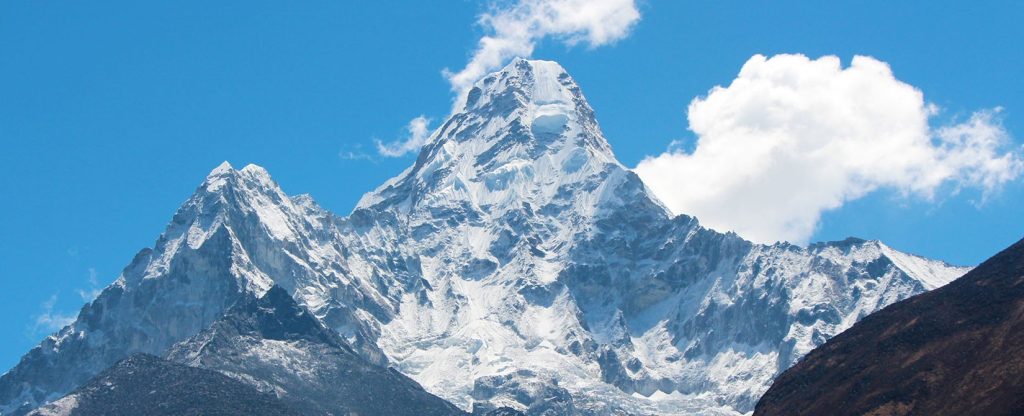
Trekking in Nepal in June June is part of Nepal’s short summer before the monsoon season occurs from the second to the third week of this month. You can expect the daytime temperatures to be hot below 1500 meters, warm up to 2500 meters, and warm/cool above 2500 meters. You can do most treks during June; choosing higher altitude treks for cooler temperatures is advised. This is ideal for the Upper Dolpo Circuit, Upper Dolpo Traverse, or Upper Mustang, as these regions are in the rain shadow. As always – it pays to invest in proper equipment such as a suitable down jacket (if you are trekking at a high altitude), sleeping bag, a couple of layers of fleece, right thermal underwear, thick hiking socks, gloves, trekking pants, warm hats to name a few necessary gears to invest in. It is always better to have more than less. It is good to dress up in layers, which you can ‘peel’ one at a time when you start to warm/heat up as you begin trekking. Benefits of Trekking in Nepal Himalaya during June. This is the spring season, and flowers bloom in the middle hills of Nepal. Rhododendron forests can be very colourful with white, pink, and crimson red (Nepal’s national flower) flowers in bloom, Magnolias and wild orchids, to name a few. However, the clouds can begin to form in the latter part of the day, and it can start raining at the lower altitude and snow in the higher elevations during the late afternoon or evening. This is a good thing as it can clear the clouds and clear the clouds for excellent mountain views the following day. There will still be fewer trekkers on the trail and lodges if you go trekking during February to the popular trekking areas where there are lodges. You will be warm to hot while hiking during the daytime. You could be the only trekker in the lodge. For the same reason, the wifi works better in the hostels as fewer people log in. You can use the internet better for weather forecasts and temperatures. There will be fewer people queuing for hot showers. The flowers will be blooming at altitudes above 4500 meters. Can I do a high-altitude trek in Nepal during June? You can undoubtedly do a high-altitude trek in Nepal during June. This is a better time to do a high-altitude trek than February or March. This is because we receive some monthly precipitation for a few days. We receive more massive snowfalls during February and March. Dangers/Inconveniences of trekking in Nepal during June. Most of the lodges should be open. Not all food on the menu will be available. There could be very windy conditions in the higher elevations, be prepared. The monsoon season might start while you are trekking. The leeches might start coming out below 2400 meters if it rains. It can be hot and humid in lower elevation areas. Insects in the lower altitude areas can bite you – bring suitable insecticide. June is still early, but the monsoon rains could disrupt domestic flights to or from Short take-off and landing strips (STOL) airports like Lukla, Jomsom, and Juphal. In addition, landslides can block roads causing delays in your holiday program (the 3rd week of June is an early monsoon, unlikely for landslides, but one never knows). June 2022 – There has been high rainfall even before the monsoon clouds hit Nepal. June 2021 – The monsoon took place on time, but it dumped a lot of rain from the 11th of June, causing huge floods and landslides and causing massive damage at the beginning of the monsoon season. Rainfall was 25 % heavier this year compared to the previous years. June 2020 – The first weekend of this month experienced rain in the low to middle hills and snow in higher elevations. It was caused by Cyclone Nisarga, which nearly missed Mumbai on the 3rd of June. The monsoon started on the 15th of June this year. The first three weeks of June 2019 experienced some pre-monsoon rain throughout Nepal. The monsoon was ‘late’ by about ten days and arrived on the 20th of June. The monsoon’s arrival was still weak until the end of the month. June 2018 received more rain than usual in the first two weeks, and there was very little precipitation for the second half when the monsoon should have started. Trekking regions that are in the Rainshadow areas: Upper Mustang Trek You will be visiting one of the scenic trekking trails in the monsoon season in Nepal. Once an independent Kingdom that was later annexed into Nepal’s territory, Upper Mustang is one of the restricted trekking destinations in Nepal that requires a special permit and to be booked with a tour operator. Back Packers are not allowed to trek here—the Buddhists who were once followers of the Bon religion inhabit the upper Mustang predominantly. Upper Mustang is a high-altitude desert. During the monsoon season, you will witness the rivers’ increased water levels, including the holy and mighty Kali Gandaki River. Upper Dolpo Trek This trekking destination takes you to one of the most remote regions in Nepal. The followers of the Bon religion, followed by Buddhists and Hindus, mainly inhabit it. The locals’ terrain, culture, and traditions are very close to the Tibetan way of life. The trekking trail partly lies in the Shey Phoksundo National Park, Nepal’s most extensive National Park. It is the only National Park in the trans-Himalaya region. The beauty of this region is unparalleled to other trekking destinations. Upper Dolpo doesn’t receive continuous rainfall in the rain shadow region. Trek here for the unique culture, landscape, scenery, and biodiversity. Jomsom to Muktinath Trek – email us for the itinerary. This trekking destination is more popular as a pilgrimage that is suitable during the monsoon season in Nepal. Muktinath attracts both Hindus and Buddhists alike for pilgrimage. Thus, you may embark on a spiritual or
Trekking to Gokyo Lakes and Everest base camp in early winter
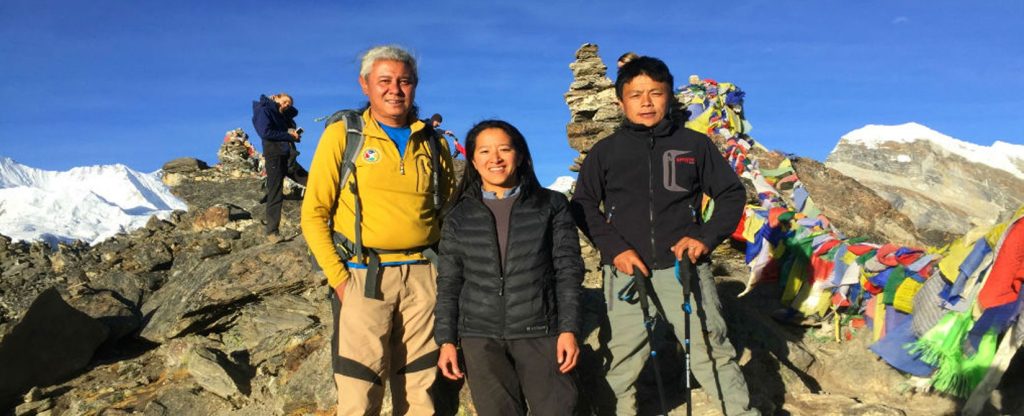
Gokyo Lakes And Everest Base Camp Trek In Early Winter Gokyo Lakes and Everest Base camp trek in early winter. 1st December – 20th December 2017 Chris and Tara did the Manaslu Circuit trek with us in December 2016 and had spoken about doing the Three high passes of Everest and a possible tour of Tibet the following year during the walk. The planning of the trek. Chris initiated the communication on the Everest trek’s three high passes and a tour of Tibet two months after getting home. We exchanged numerous ideas and itineraries via email over several months. Ten weeks before the trek began, Chris faced a hiccup at work, one of his engineers resigned, and the project they were working on needed to be finished before the end of the year. Then, two weeks before the trek, Chris confirmed his worst fears – he couldn’t complete the project before the hike and had to pull out at the last moment. This left Tara to do the trek for which all her holiday time and flights had been finalised. My team’s other worry was the early onset of cold weather from mid-October onwards – this would make the conditions on the high passes icy and potentially dangerous. However, we firmly believe in prevention rather than cure – I advised Tara on the potential risks of doing the high passes during December while also of the possibilities of meeting people who had done it while on the lodges and trail. Tara kindly agreed to follow our advice and stay on the safe side rather than risk injury and an early end to her holiday. So we decided to do the Gokyo Lakes and Everest base camp trek for safety measures. Tara was met at the airport by me, brought to her hotel, and later that evening, we had dinner with our team of climbers who had just returned the day before from Lukla. This was Tara’s third trek with our company. The next day Tara had a free day to wander around and do things in Thamel while I had some chores to be handled. We agreed to meet the following day in the hotel lobby before going to the airport for our flight to Lukla. Tara at Gokyo Ri 5364m Lukla and Beyond. At our agreed time, I met Tara and drove to the domestic terminal to catch our flight to Lukla. Everything seemed to be on schedule; our flight was announced, and we boarded the bus to take us to the aircraft. A few minutes later, the airline crew announced the delay in departure as the fog rolled on the runway, making visibility poor for planes to take off. Seventy minutes of uncertainty, then there was a flurry of activities at the airport grounds, and soon we were driven to our aircraft, boarded the plane, and were airborne after 15 minutes. We reached Lukla airport in 25 minutes, and as usual, there were many activities with aircraft landing and a rapid turnaround to return to Kathmandu. Our support crew consisting of Sundar and Dil met us at Lukla. We walked to our lodge to have some hot drinks. We decided to go further than our planned stop at Phakding; instead, we opted to go on for two more hours to Monjo’s village. We stopped for lunch at Phakding and continued to Monjo. We got to our destination 5 hours after leaving Lukla. The temperatures had plummeted in just a short three days since I had gone to Lukla. The daughter-in-law had taken over the Monjo Guesthouse. She happened to be a former colleague of Sundar, and they had a great time catching up and speaking of their time working together. Namche Bazaar 3441m It was a blessing in disguise that we got to Monjo as this was a Saturday, and Namche had its weekly market. We would make it in time to witness this decades-old traditional market towards the end. We had a twenty-minute hike to the Sagarmatha National Park entrance, where registration takes place. Then, we proceeded towards Namche crossing the new high bridge (seven suspension bridges from Lukla to Namche). There is a steep ascent to Namche from the last bridge, which happens to be the highest. We arrived in Namche in time to see the remaining traders with their goods and wares. It had been more than a couple of decades since I had witnessed this traditional market. It brought back some memories. We stepped into a local eatery to have some dumplings for lunch before checking into our rooms at our lodge. The temperatures had plummeted – two degrees Celsius in the sun. We had an early dinner, discussed the next day’s program, and went to bed early. Acclimatisation day at Namche We went to Sagarmatha National Headquarters at the top of Namche for panoramic views of the surrounding peaks, including Mount Everest. We spent time there admiring the breathtaking views and taking photographs as usual. We visited the natural history museum and walked over to the privately-owned Sherpa museum, Sherpa culture photo gallery, and Everest documentation centre before returning to our lodge for lunch. We decided to watch a free documentary at the Liquid bar. They show free documentaries twice daily at 3 pm and 7.30 pm daily; the documentaries are usually related to Everest. The owner decided to put on Sherpa, the film on the avalanche that killed 16 Sherpas in 2014. It focuses on Phurba Tashi, the second person to climb Everest 21 times after Apa Sherpa. Phurba is also featured on Discovery Channel’s documentary – Everest, Beyond the limit. It was still an engaging experience despite watching it for the second time. We went back to the lodge for dinner and retired in preparation for the next day. Thame village 3800m. We started with a short climb after leaving our lodge to the West of Namche. It was another clear morning with stunning views. Thame’s walk is on a
Amazing photos of Ladakh that will give enough reasons to want to go trekking
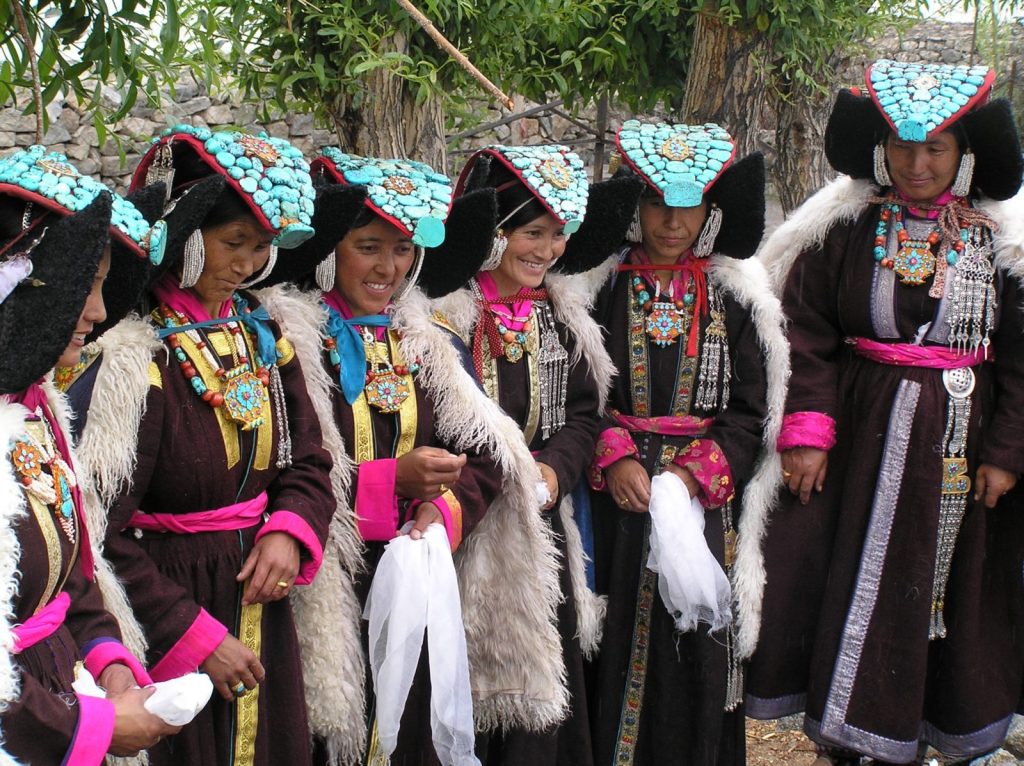
Amazing photos of Ladakh that will give enough reasons to want to go trekking There are green valleys amidst the dry high mountains in the cold desert. Trek past numerous Buddhist monuments such as the Chortens while trekking in Ladakh. Trekking in Ladakh can be hot as the season is during the Northern Hemisphere’s summer. Enjoy a fantastic array of colours on the Markha valley trek. Bask in the sun while enjoying your healthy breakfast before starting your trekking day. Enjoy camping amidst stunning landscapes. There are numerous Himalayan Peaks in Ladakh. I am enjoying breathtaking scenery while trekking in Ladakh. The trekking trails in Ladakh are full of Buddhist prayer walls. Buddhism is primarily practised in all parts of Ladakh. Enjoy breathtaking sunrises and sunsets while trekking in Ladakh. The locals tie prayer flags on the passes to show gratitude to the gods for good weather on their crossing. Mount Khang Yatse, 6400 meters, is the highest peak on the Markha Valley trek in Ladakh. Rumbak is a village with high snow leopard sightings during winter. Rumbak is where most documentaries on Snow leopards are made. A hard day over a 5000-meter pass can be rewarding with scenery like this. Camp in high summer pastures on the Markha Valley trek. See Ladakhi ladies in traditional costumes during the Leh Festival in September. Go hiking over several high passes that are above 5000 meters in altitude. Make friends with curious donkeys while trekking in Ladakh. Watch street vendors selling fresh organic vegetables and fruits on the streets of Leh. Stok Khangri, 6153 meters, dominates the southern skyline in Leh. Lake Tsomoriri lies in the Changtang region of Ladakh. Changtang – Northern plateau is the continuation of the Tibetan plateau. It is home to many migratory birds critically endangered during the summer. Tsomoriri lake is 4 km wide and 40 km long. Have a cultural immersion with Changpa nomads of the Changtang plateau. Thikse Monastery is 7 km out of Leh town. One can visit it in pre-dawn to hear Gelukpa monks chant during dawn. Check out our Trekking packages for Nepal, Bhutan, India, and Tibet.
12 Beautiful Himalayan Lakes
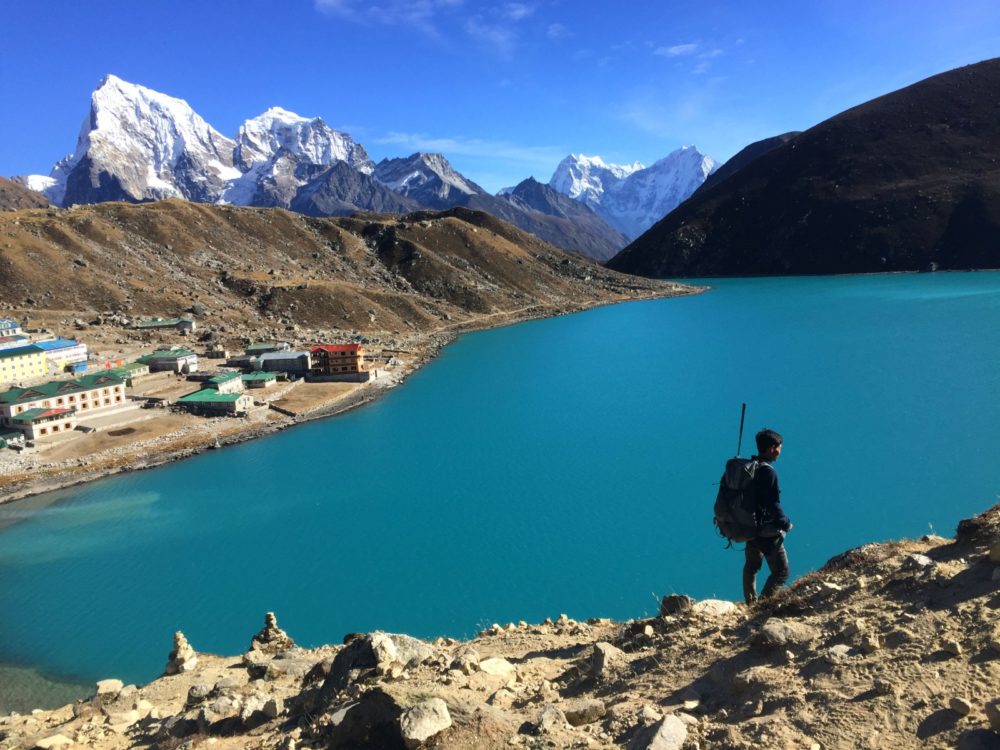
12 Beautiful Himalayan Lakes. Most regular hikers who go hiking around the various mountain ranges know that glacial lakes are part and parcel of the ecosystem. Likewise, the experienced trekkers know some of the most beautiful lakes in the world’s highest mountain chain – The Himalayas. However, many trekkers feel their trip is incomplete when they miss the journey to a Himalayan lake. Here is a list of twelve of the highest, most extensive, and most stunning mountain lakes in the Himalayas. 1. Rara Lake, Nepal Rara lake, at 3060 m, is located in the Mugu District of Far Western Nepal. Rara is the largest and deepest Lake in Nepal. It sits in a valley surrounded by lush forests and stunning mountain vistas. It is so beautiful that being around this surround is hypnotizing. The temperate forests and the alpine pastures that enclose the valley cover the whole area. Thus, trekking around the Rara Lake region is an excellent combination of a pristine lake, mountain vistas, and Himalayan flora and fauna. 2. Gurudongmar Lake, India Gurudongmar Lake, at the height of 5430 m, is amongst the highest lakes in the world, while it is the second-highest lake in Sikkim and India. The second highest lake in India is a sight to behold with the picturesque beauty of the surrounding. The views of Mount Siniolchu and Kanchenjunga are icing on the cake. The surrounding snow-clad mountains and the clear icy water are considered sacred lakes. Gurudongmar lake is about an eight to nine hours drive from Gangtok. First, one has to go through Lachen, a small town in North Sikkim. Most travellers stop at Lachen for the night to help acclimate and break the journey. The closest village to the Lake is Thangu at 4270 m. One needs to attain an inner line permit to visit this lake because of its proximity to the Indo-Tibet border. Legend has it that Guru Padmasambhava touched and blessed the lake, and it is widely believed that a small part of the lake never freezes, even during the extreme winter temperatures at such an altitude. This lake is one of the Teesta river’s primary sources, flowing from Sikkim, West Bengal, and Bangladesh to the Bay of Bengal. It is widely believed that this lake’s water has healing properties; many visitors bring water from this lake back to their homes. 3. Gosainkunda Lake, Nepal Gosaikunda Lake, at 4,380m, is located in the Rasuwa district and is one of the famous pilgrimage sites for Hindus. This freshwater lake is part of a popular trekking route in the Langtang region, north of Kathmandu. It is believed that this region has 108 lakes of various sizes. However, I once met an elderly local who told me he could only count 18 despite spending a few weeks wandering around the area. Hindu mythology considers the Gosainkunda area as the abode of Hindu Deities, Lord Shiva, and Goddess Gauri. Hence, Gosainkunda is called Samudramanthan in the Hindu scriptures and epics such as Bhagavata Purana, Vishnu Puran, Ramayana, and Mahabharata. Janai Purnima is one Hindu festival where thousands of pilgrims from India and Nepal throng this lake. 4. Shey Pokshundo Lake, Nepal Situated at an altitude of 3,611 m, Shey Phoksundo Lake is the second deepest lake in Nepal. This glacial lake is located in Lower Dolpo, one of the most remote and isolated high valleys in the Trans Himalaya. This lake is considered sacred by the residents. Although some say swimming is prohibited, the locals take a bath in this lake. The village of Ringmo sits on the southern edge of the “dam caused by a landslide some 30,000 to 40,000 years ago. About 20 Chortens (Stupas) are on the south side of the lake, leading to an ancient Bon (religion preceding Buddhism) monastery. Just a short distance from the lake’s southern exit is the impressive Siligad Waterfall at 167 m. Eric Valli’sValli’s movie “Caravan or “Himalaya” introduced Shey Phoksundo lake and Dolpo to the world. 5. Tilicho Lake, Nepal Tilicho Lake (4,949m) is one of the highest lakes in Nepal. It is situated on the north side of the Annapurna range bordering with Manang and Mustang districts. It is considered a sacred lake and featured in one Hindu epic – Ramayana. A visit to Tilicho lake can be combined with the Annapurna Circuit Trek. The panorama from the valley’s edge can be second to none on clear days. Views of Annapurna II, III, IV, Ganga Purna, Himalchuli, Manaslu, Himlung, and Chulu West can be breathtaking. 6. Gokyo Lakes, Nepal The Gokyo lakes are six Lakes at the foothills of the Mahalangur range in the Everest Region. Dudh Pokhari, also called Gokyo Lake, is most frequented by trekkers. It is on the less frequented trail away from the main path to the Everest Base Camp trek. These lakes are situated between 4700 to 5000 meters above sea level. These lakes are the world’s highest freshwater lake system comprising six leading lakes, of which Thonak Tsho is the largest. The Gokyo and associated wetlands were designated a Ramsar Site. 7. Namtso Lake, Tibet Namtso Lake is one of the most beautiful natural sites in Tibet. Namtso is one of the most beautiful natural sights in Tibet. It is said that it is the largest high-altitude brackish lake in Tibet, with 4718 m. Namtso is one of the three sacred lakes of Tibet. The crystal clear water, the surrounding snow-capped peaks, and yak herds of locals make it a charming picture-perfect spot. The sunrise and sunset at the lake can be breathtakingly gorgeous. Witness the magic when the sky turns golden and red at dusk. If you can take the cold at night, stare away at the millions of stars in the sky. 8. Mansarovar Lake, Tibet Lake Manasarovar, situated approximately 30km from Mt. Kailash, is one of the world’s highest freshwater lakes. The sacred lake is an important pilgrimage site for Buddhists and Hindus. It is believed that bathing in the










